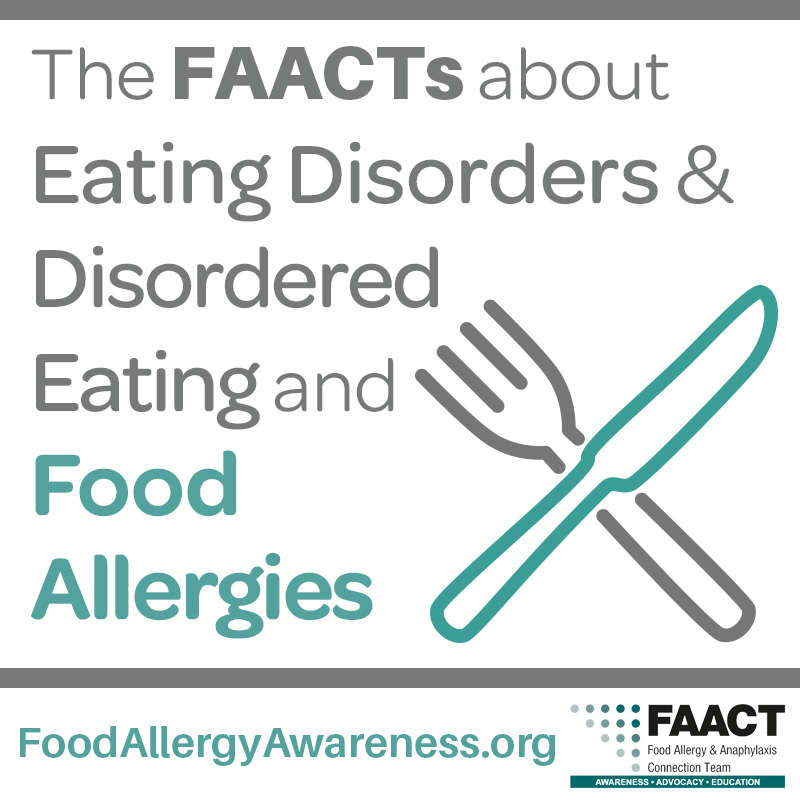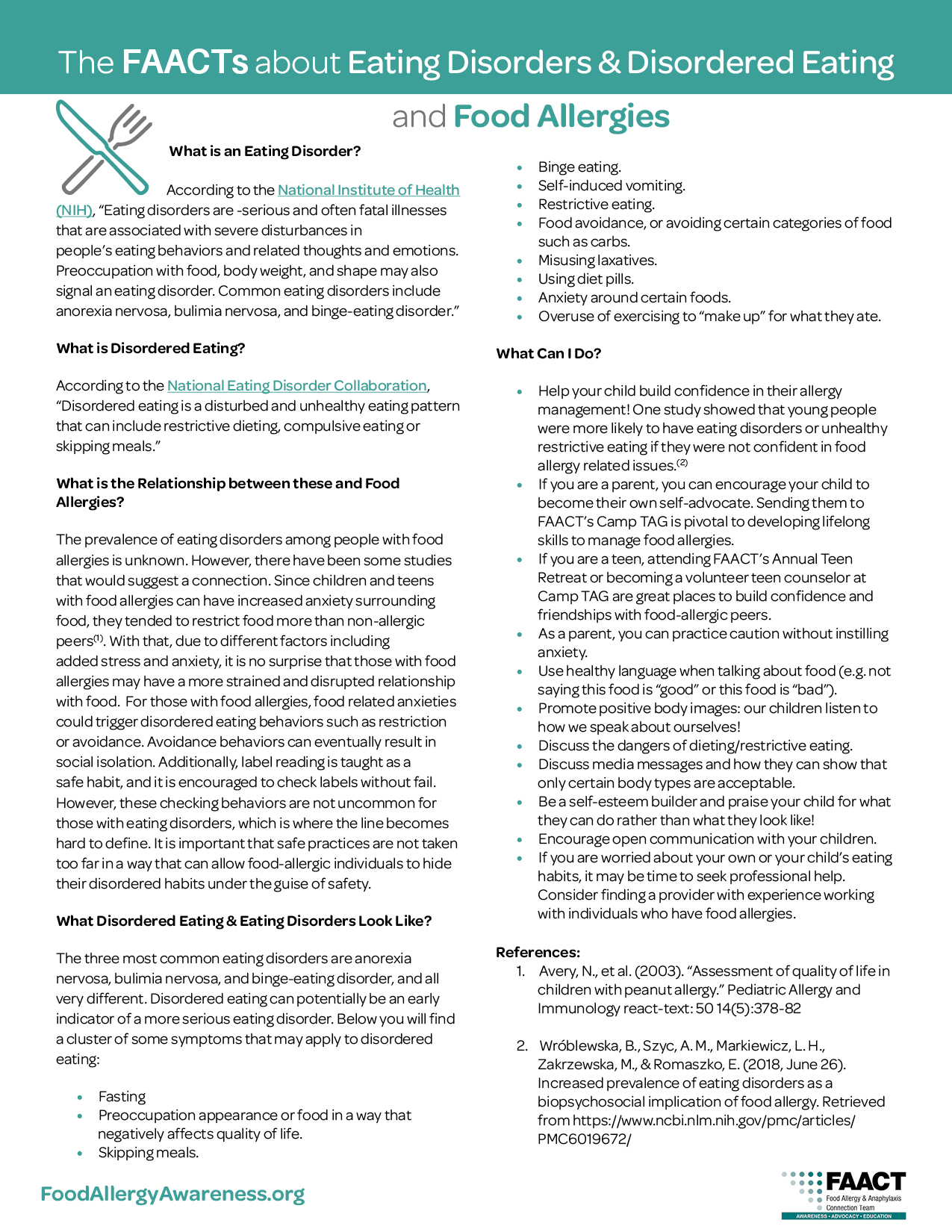Behavioral Health
Anxiety and Depression
Back to Category View
The FAACTs about Eating Disorders & Disordered Eating and Food Allergies
What is an Eating Disorder?
According to the National Institute of Health (NIH), “Eating disorders are -serious and often fatal illnesses that are associated with severe disturbances in people’s eating behaviors and related thoughts and emotions. Preoccupation with food, body weight, and shape may also signal an eating disorder. Common eating disorders include anorexia nervosa, bulimia nervosa, and binge-eating disorder.”
What is Disordered Eating?
According to the National Eating Disorder Collaboration, “Disordered eating is a disturbed and unhealthy eating pattern that can include restrictive dieting, compulsive eating or skipping meals.”
What is the Relationship between these and Food Allergies?
The prevalence of eating disorders among people with food allergies is unknown. However, there have been some studies that would suggest a connection. Since children and teens with food allergies can have increased anxiety surrounding food, they tended to restrict food more than non-allergic peers(1). With that, due to different factors including added stress and anxiety, it is no surprise that those with food allergies may have a more strained and disrupted relationship with food. For those with food allergies, food related anxieties could trigger disordered eating behaviors such as restriction or avoidance. Avoidance behaviors can eventually result in social isolation. Additionally, label reading is taught as a safe habit, and it is encouraged to check labels without fail. However, these checking behaviors are not uncommon for those with eating disorders, which is where the line becomes hard to define. It is important that safe practices are not taken too far in a way that can allow food-allergic individuals to hide their disordered habits under the guise of safety.
What Disordered Eating & Eating Disorders Look Like?
The three most common eating disorders are anorexia nervosa, bulimia nervosa, and binge-eating disorder, and all very different. Disordered eating can potentially be an early indicator of a more serious eating disorder. Below you will find a cluster of some symptoms that may apply to disordered eating:
- Fasting.
- Preoccupation appearance or food in a way that negatively affects quality of life.
- Skipping meals.
- Binge eating.
- Self-induced vomiting.
- Restrictive eating.
- Food avoidance, or avoiding certain categories of food such as carbs.
- Misusing laxatives.
- Using diet pills.
- Anxiety around certain foods.
- Overuse of exercising to “make up” for what they ate.
What Can I Do?
- Help your child build confidence in their allergy management! One study showed that young people were more likely to have eating disorders or unhealthy restrictive eating if they were not confident in food allergy related issues.(2)
- If you are a parent, you can encourage your child to become their own self-advocate. Sending them to FAACT’s Camp TAG is pivotal to developing lifelong skills to manage food allergies.
- If you are a teen, attending FAACT’s Annual Teen Retreat or becoming a volunteer teen counselor at Camp TAG are great places to build confidence and friendships with food-allergic peers.
- As a parent, you can practice caution without instilling anxiety.
- Use healthy language when talking about food (e.g. not saying this food is “good” or this food is “bad”).
- Promote positive body images: our children listen to how we speak about ourselves!
- Discuss the dangers of dieting/restrictive eating.
- Discuss media messages and how they can show that only certain body types are acceptable.
- Be a self-esteem builder and praise your child for what they can do rather than what they look like!
- Encourage open communication with your children.
- If you are worried about your own or your child’s eating habits, it may be time to seek professional help. Consider finding a provider with experience working with individuals who have food allergies.
References:
- Avery, N., et al. (2003). “Assessment of quality of life in children with peanut allergy.” Pediatric Allergy and Immunology react-text: 50 14(5):378-82
- Wróblewska, B., Szyc, A. M., Markiewicz, L. H., Zakrzewska, M., & Romaszko, E. (2018, June 26). Increased prevalence of eating disorders as a biopsychosocial implication of food allergy. Retrieved from https://www.ncbi.nlm.nih.gov/pmc/articles/PMC6019672/
Download FAACT's Eating Disorders/Disordered Eating and Food Allergies handout.
